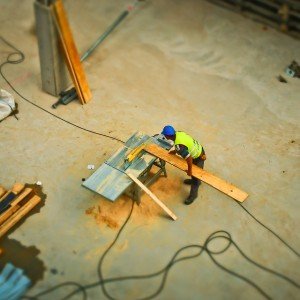lone working
Protecting lone workers is not a choice, it’s a call of duty
Following two health and safety prosecutions at the end of 2016, Klaus Aliion, Managing Director, ANT Telecom, looks at what companies should be doing to protect their lone workers.
 Accidents can be all too common if proper risk assessments and prevention strategies are not in place. By following the health and safety legislation and guidance, implementing additional training, integrating strictly adhered lone worker protocols, and providing an effective check-in and alert system, companies can avoid the exorbitantly hefty fines, loss of profits, and most importantly, injury and death of workforce.
Accidents can be all too common if proper risk assessments and prevention strategies are not in place. By following the health and safety legislation and guidance, implementing additional training, integrating strictly adhered lone worker protocols, and providing an effective check-in and alert system, companies can avoid the exorbitantly hefty fines, loss of profits, and most importantly, injury and death of workforce.
As the lone worker population continues to grow and the regulatory scrutiny of corporate health and safety measures increases, companies must renew their efforts to ensure lone workers are adequately protected.
Through independent advice and thorough environmental analysis, organisations can best develop a customised approach that is fit for purpose.
There have been two recent cases of firms being fined due to workers being injured, one fatally, in trenches that have thrown a spotlight on how serious the issue of health and safety is. A building firm has been fined £30,000 after a lone worker died and three firms have collectively been fined over £2m due to safety errors had been made that resulted in a worker suffering serious leg injuries.
In the first case George Wilson, 64, was carrying out drainage work with a mechanical excavator at Heriot Mill Farm, Heriot in August 2014, when a section of the trench he was excavating collapsed while he was in it. Mr Wilson suffered fatal injuries with the cause of death being given as traumatic asphyxia and chest injuries.
The company admitted:
- Failing to ensure a safe system of work was in place for carrying out drainage excavation works;
- Failing to ensure that the soils from the excavation were battened back to a safe angle; and
- Failing to ensure there was a clear communication policy with the employee in place while he was working alone.
Important things to consider:
- Protecting lone workers is a serious consideration with major human implications. In case an accident does occur, it’s important that businesses look to safeguard lone workers by not just focusing on the alarm, but also on the processes and procedures to ensure workers get the timely help they need when faced with an SOS.
- Given the widespread variability in operational environments a sensible approach is for senior executives with responsibility for operations or health and safety to take ownership of the issue, and conduct a collaborative, risk-based audit of common workforce activity to identify needs and areas of exposure;
- Businesses should engage in open dialogue with lone workers to understand their real-world requirements. What are their everyday challenges? Where are the risks, and how safe would managers feel if they were faced with similar risks supported by their existing communications systems? These are human considerations and they require similarly human engagement to arrive at the right solution;
- Best practice commonly relies on the involvement of a trusted telecoms partner that can help companies identify options, define processes and implement solutions. The best partners will have expertise in the design of lone worker strategies, an understanding of environmental risks and knowledge of the evolving marketplace for lone worker solutions. Moreover, they will provide independent advice to help organisations design agile communications approaches that respond to the changing lone worker landscape.
When companies make lone worker safety a priority, they’ll immediately see the benefits that come hand-in-hand with providing a better and safer work environment for the workforce.
Protecting lone workers is not a choice, it’s a call of duty
Following two health and safety prosecutions at the end of 2016, Klaus Aliion, Managing Director, ANT Telecom, looks at what
Safety & Health Practitioner
SHP - Health and Safety News, Legislation, PPE, CPD and Resources Related Topics
SHP’s top 10 health and safety prosecutions of 2023
Over 90% of stalking victims experience psychological impacts
One metric to rule them all

 Accidents can be all too common if proper risk assessments and prevention strategies are not in place. By following the health and safety legislation and guidance, implementing additional training, integrating strictly adhered lone worker protocols, and providing an effective check-in and alert system, companies can avoid the exorbitantly hefty fines, loss of profits, and most importantly, injury and death of workforce.
Accidents can be all too common if proper risk assessments and prevention strategies are not in place. By following the health and safety legislation and guidance, implementing additional training, integrating strictly adhered lone worker protocols, and providing an effective check-in and alert system, companies can avoid the exorbitantly hefty fines, loss of profits, and most importantly, injury and death of workforce.
Yet again we’re offered an ‘article ‘ about how to protect lone workers which turns out to be a thinly veiled advertisement for lone worker telecoms devices . The scenarios given would simply benefit from a mobile phone. The article implies that these devices are standard practice. They aren’t. They are PPE and not required for most lone workers. Many h & s managers have invested heavily in these only to find they are not used. Beware.
Absolutely right- well said Henry. Seems that genuine, practical H&S no longer exists, its now an industry more geared to making certain individuals lots of money. Sad days indeed.